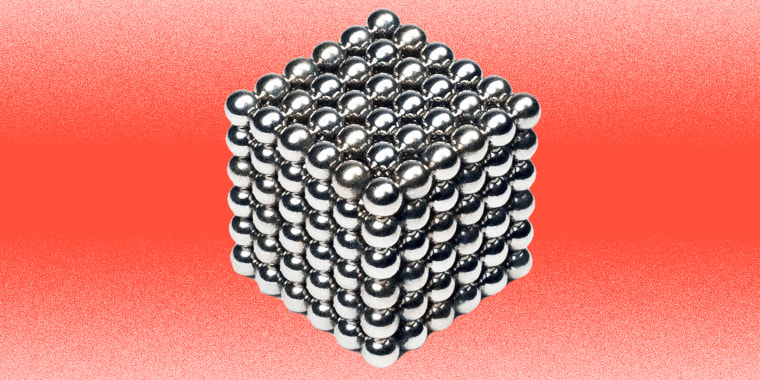Children are at an increased risk of swallowing "high-powered, rare-earth" neodymium magnets after rules that banned them from appearing in toys like building sets and spinning toys were lifted several years ago, according to a new study published in JAMA, the Journal of the American Medical Association.
The neodymium magnets, which typically range between 3-6 millimeters in size and are 5 to 10 times more powerful than traditional ferrite magnets, are "serious health risks" according to the study. The study also highlights the increase in emergency room visits for swallowing magnets after the 2014 Safety Standard for Magnet Sales rule, published by the Consumer Product Safety Commission (CSPC), was lifted due to legal challenges in 2016.
According to the study, which analyzed a national sample of United States injury-related emergency room visits from 2009 to 2019, magnet ingestions decreased in 2012, when the CSPC first began intervening to bar the high-powered magnets from being used in toys. In 2014, when the CSPC issued the Safety Standard for Magnet Sales rule, incidents decreased even further, dipping from being named in 3.58 cases per 100,000 cases to happening to just 2.83 cases per 100,000.
After the rule was remanded in 2016, those numbers spiked again, reached 5.16 cases out of every 100,000 cases and continuing on an upward trend through 2019. The majority of cases happen in children under the age of 5 years old.
Shihan Qu, the founder of Zen Magnets, disputes that the repeal of the ban has led to increased incidents among children.
"The narrative that the increase in magnet ingestions after 2016 was caused by the repeal of the adult magnet set ban (which was only live from 2015-2016) is the biggest myth perpetrated by the magnet ban lobby," Qu told TODAY. "The fact is, high-powered magnets in children toys have been illegal since 2009, and when the adult magnet ban got repealed, the CPSC visibly stopped enforcing the children's magnet ban."
"High-powered, recreational magnets are not children's toys, and not everything that is fun can be for children," Qu continued. "That's why our products come covered with more warnings than cigarettes, trampolines and chainsaws combined."
TODAY recently highlighted a troubling case: Four-year-old Peyton MacNair swallowed 27 magnets that he had put together into a toy snake, and they had caught in his stomach and throat. MacNair's mother immediately knew what had happened and quickly brought Peyton to the emergency room. He did not suffer serious complications.
Dr. Michael Foreman, a gastroenterologist who treated Peyton, told TODAY that the real danger of magnets is that they are still attracted to each other even when swallowed, and can pull through tissue to attach to another magnet in some cases. If the magnets get too far into the body, they may need to be surgically removed.
“These neodymium magnets, even if they are small, they can be really powerful. The size does not have anything to do with how powerful they are,” he told TODAY earlier in November. “They have a strong pull. ... They can end up giving you a hole in your bowel and that is the worst-case scenario. That can be devastating and result in surgery or resection."
Foreman also noted that the removal of the ban on such magnets had led to an increase in children swallowing magnets.
"We've seen cases triple, up to nearly 3,000 (a year)," he said. "There are few emergencies in pediatric gastroenterology and this is one of them."


